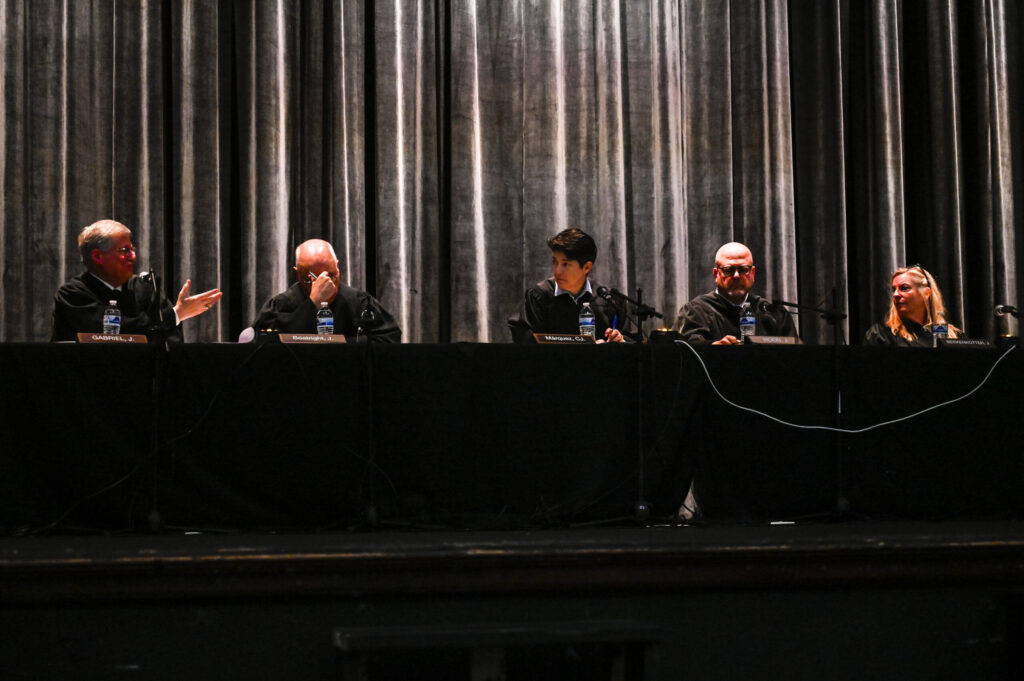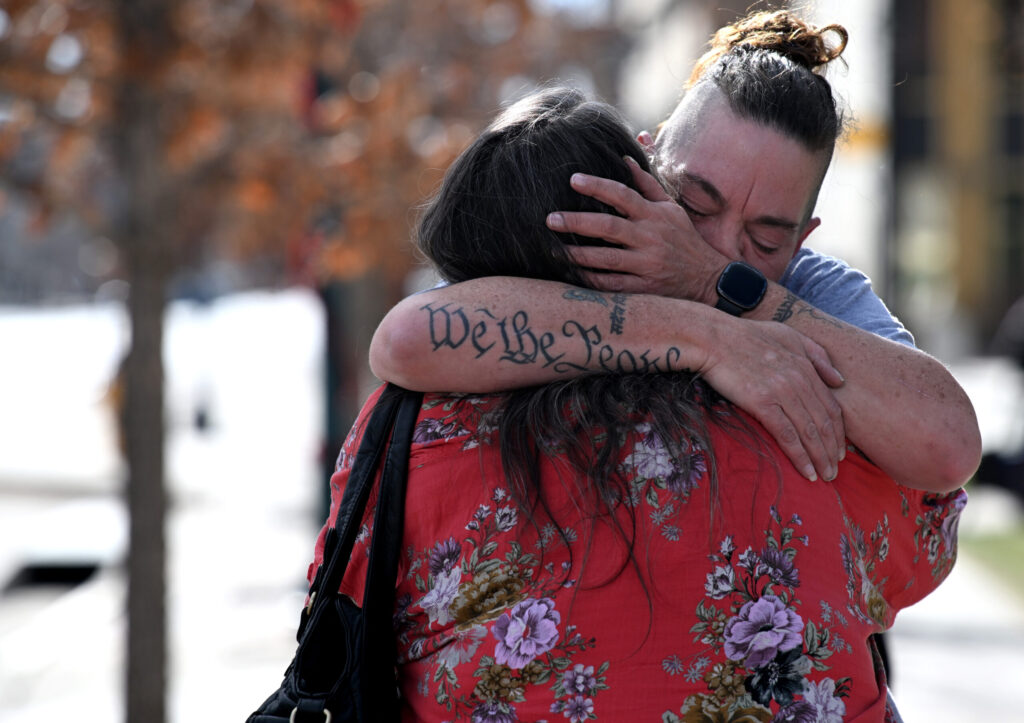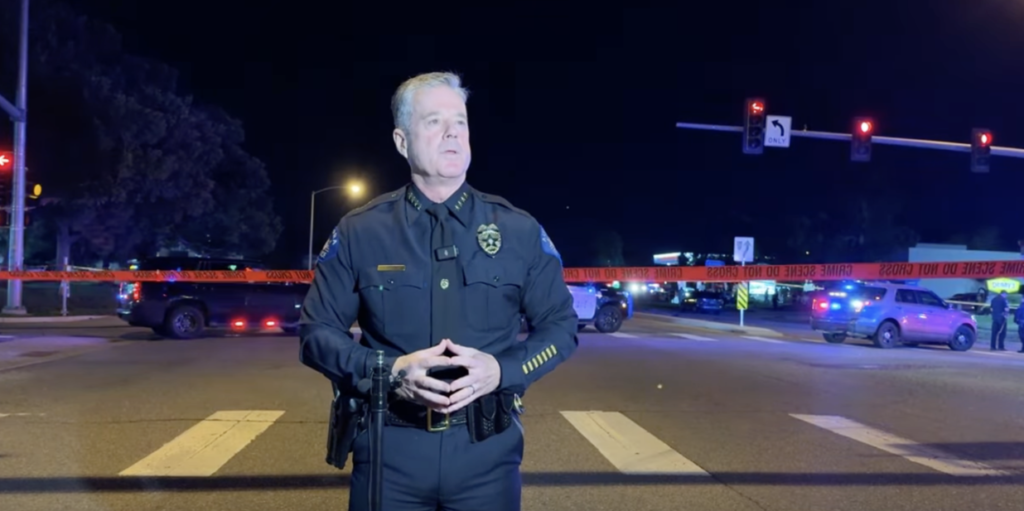Appeals court says prosecutors may use evidence of defendant abusing witness to boost credibility
Colorado’s second-highest court ruled last week that prosecutors may introduce evidence at trial of a defendant’s past abuse of a witness if it will help jurors understand why the witness may have originally lied to protect the defendant.
Romando Marquis Jones and Dacey Spinuzzi are both serving prison sentences for the death of 14-month-old Aiden Seeley, who was Spinuzzi’s foster child. Jones and Spinuzzi were the only adults in their Pueblo County home, and both changed their stories about what happened over time.
Although Spinuzzi originally took the position that Aiden’s death was an accident and Jones was not in the home, she ultimately testified that Jones’ actions caused the child’s fatal injuries. As part of the evidence, a trial judge permitted prosecutors to inform the jury about prior threats and abuse that Jones directed toward Spinuzzi, so that jurors could assess her credibility.
Jones argued the evidence of his prior conduct served only to paint him as a “violent bad man who deserved retribution.” But a three-judge Court of Appeals panel concluded the information was aimed at helping the jury decide whether to believe the version of events Spinuzzi recounted on the witness stand.
“D.S.’s credibility was crucial in this case. She was the prosecution’s primary witness at trial, and discussions of her inconsistent testimony dominated opening statements and closing arguments,” wrote Judge Jerry N. Jones, who is not related to Romando Jones, in the May 1 opinion. “Because evidence that (Romando) Jones had previously abused D.S. shed light on why she repeatedly lied to law enforcement about A.S.’s death, it was probative of her credibility.”
Jurors heard that on Sept. 16, 2020, Romando Jones was carrying Aiden by the ankles and bouncing him, while the child was whimpering. Minutes later, Spinuzzi saw Aiden gasping for air and appearing limp. Jones told her he “just tossed him down” and had “done it before.”
As Spinuzzi called 911, Jones warned her to “f—ing fix this” and to not disclose that he was present. Jones left the house and Spinuzzi told a dispatcher Aiden had fallen. Aiden later died after suffering blunt force head trauma, and there were indications of other existing injuries.
Initially, Spinuzzi and Jones told authorities he was not home at the time of Aiden’s injuries and the death was the result of an accident. Eventually, both changed their stories, with Jones admitting to being at the house and Spinuzzi taking a plea deal that required her to testify truthfully against Jones for murder.
At trial, the prosecution confronted Spinuzzi about having “repeatedly lied to law enforcement in order to cover the fact that (Jones) was causing these injuries.” Spinuzzi acknowledged that she did, and Jones’ attorney pressed further about her initial untruthful accounts.
“You just made it up?” he asked.
“To cover up, yes,” said Spinuzzi. “I learned pretty well how to make things up.”
“You’re good at it, aren’t you?” the lawyer asked.
“Over time I covered up a whole lot,” Spinuzzi responded.
Afterward, the prosecution asked District Court Judge Thomas Flesher to permit the jury to hear evidence of Jones’ prior acts of domestic violence toward Spinuzzi. The purpose was to show the jury why Spinuzzi had learned how to “make things up” — specifically, because “Mr. Jones has been physically assaulting her for years and (she is) being tasked to lying about it,” the prosecutor said.
Flesher eventually granted the prosecution’s request, allowing evidence of Jones being violent and of a recorded phone call in which he threatened to kill her. Flesher described the phone call as “frankly, horrible” and “hard to listen to.”
But “I think that’s extremely important, extremely probative for (Spinuzzi’s), frankly, state of mind and the way that she viewed this relationship,” he continued. “It’s clear to me that if I’m wrong on this determination, I think Mr. Jones gets a new trial.”
Flesher told the jurors they were only to use the evidence to assess Spinuzzi’s credibility as a witness.
After Jones’ murder conviction, he challenged the decision to bring in the domestic violence evidence. He noted that if Flesher had an emotional reaction to it, jurors almost certainly would have, too.
“Therefore, the jury was likely to view the evidence as confirming a stereotype and convict Jones for an improper purpose — to punish him for being a stereotypical violent bad black guy,” wrote attorney Adrienne R. Teodorovic.
However, the Court of Appeals panel believed the evidence was “highly relevant” to Spinuzzi’s credibility, especially after the defense cross-examined her “extensively about the lies she’d told law enforcement.”
“Evidence that (Romando) Jones had previously abused D.S. and threatened to kill her for reporting him to law enforcement helped the jury understand why her trial testimony about A.S.’s death was inconsistent with her previous accounts,” wrote Judge Jones.
He added that the conduct toward Spinuzzi “pales in comparison to that of the charged offense — killing a fourteen-month-old child.”
The panel also concluded Flesher’s strong reaction to the evidence did not indicate he was biased against Romando Jones.
“The judge never said that he believed (Romando) Jones was guilty,” wrote Judge Jones. “That (Romando) Jones’s behavior may have caused the judge to have an ’emotional’ reaction wasn’t grounds for disqualification.”
The case is People v. Jones.












